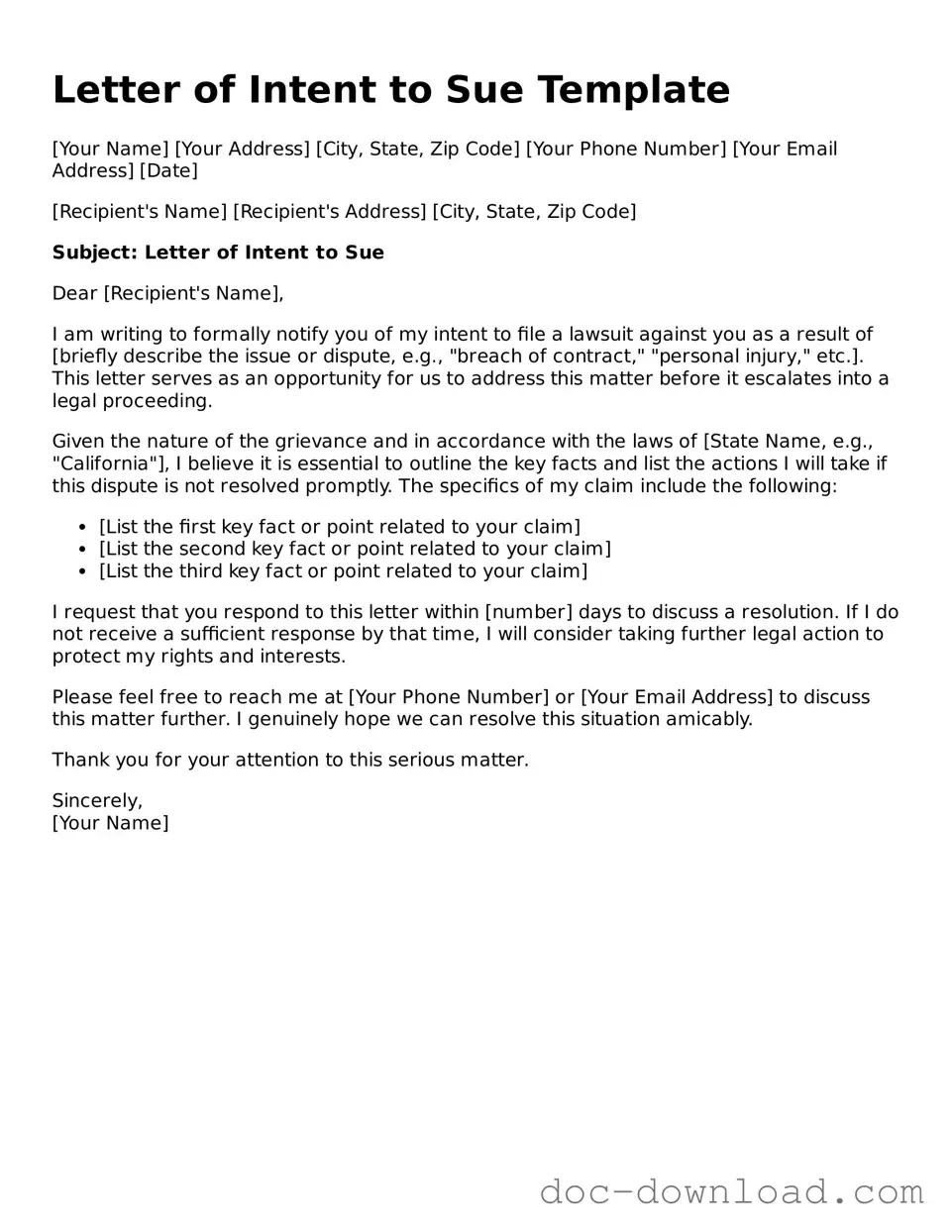Letter of Intent to Sue Template
[Your Name]
[Your Address]
[City, State, Zip Code]
[Your Phone Number]
[Your Email Address]
[Date]
[Recipient's Name]
[Recipient's Address]
[City, State, Zip Code]
Subject: Letter of Intent to Sue
Dear [Recipient's Name],
I am writing to formally notify you of my intent to file a lawsuit against you as a result of [briefly describe the issue or dispute, e.g., "breach of contract," "personal injury," etc.]. This letter serves as an opportunity for us to address this matter before it escalates into a legal proceeding.
Given the nature of the grievance and in accordance with the laws of [State Name, e.g., "California"], I believe it is essential to outline the key facts and list the actions I will take if this dispute is not resolved promptly. The specifics of my claim include the following:
- [List the first key fact or point related to your claim]
- [List the second key fact or point related to your claim]
- [List the third key fact or point related to your claim]
I request that you respond to this letter within [number] days to discuss a resolution. If I do not receive a sufficient response by that time, I will consider taking further legal action to protect my rights and interests.
Please feel free to reach me at [Your Phone Number] or [Your Email Address] to discuss this matter further. I genuinely hope we can resolve this situation amicably.
Thank you for your attention to this serious matter.
Sincerely,
[Your Name]
